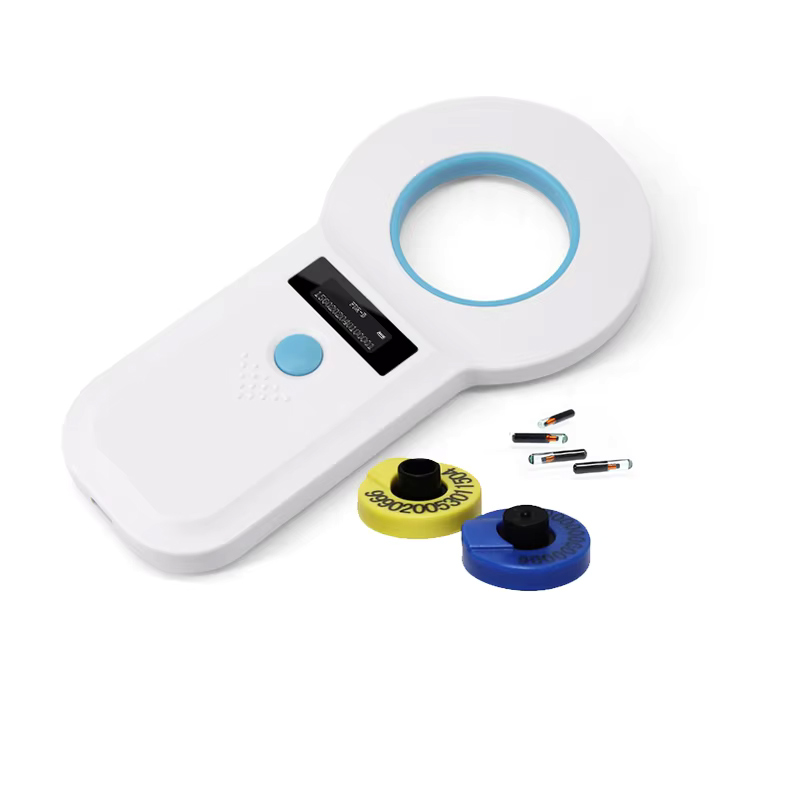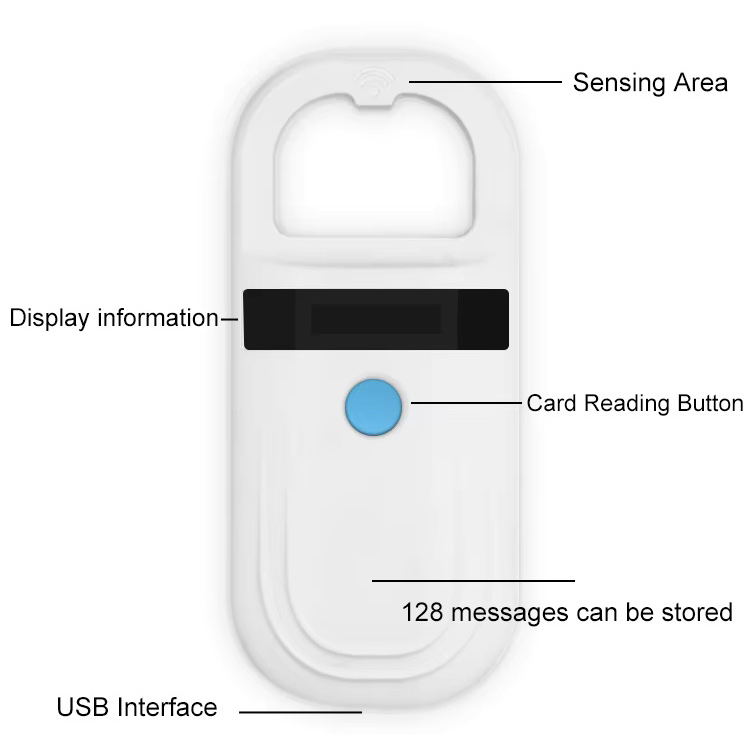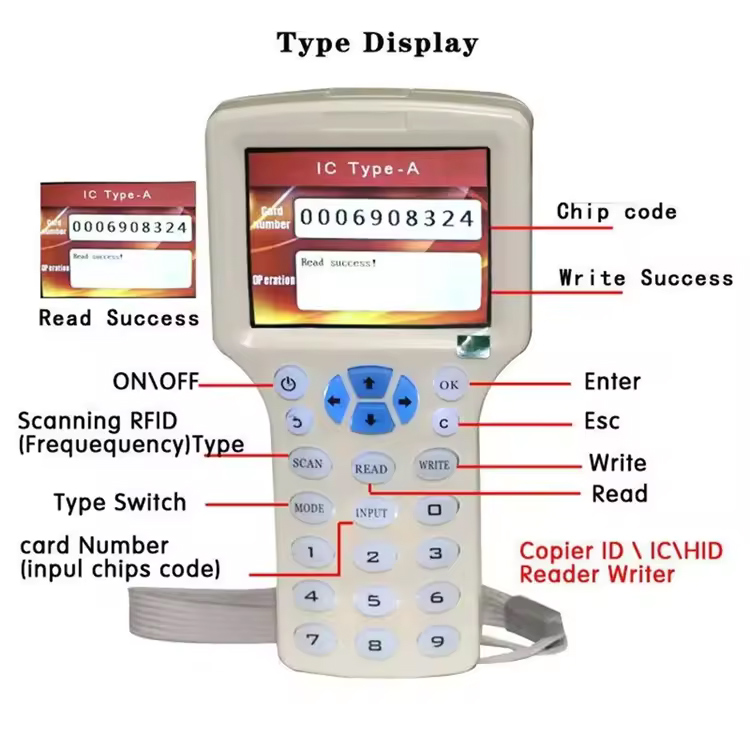
Promoting PIFOB's RFID Animal Chip Reader
I. Introduction
In the field of animal traceability, RFID (Radio - Frequency Identification) technology has revolutionized traditional methods. Animal traceability encompasses aspects such as breeding source tracing, feeding tracking, and growth record tracking. In the past, manual recording was the main approach, which was inefficient, error - prone, and easily led to confusion. However, with the application of RFID technology in animal identity recognition, animal traceability has become more reliable and controllable.
II. Application Scenarios of RFID Animal Traceability Identity Recognition
1. **Livestock Insurance Traceability**
- Cattle insurance identity recognition involves implanting electronic chips bound with identity information into cattle. These chips have unique codes and remain with the cattle for life. Implanted subcutaneously, they prevent loss, damage, or replacement, overcoming the drawbacks of easily - falling - off or replaceable electronic ear tags. When it comes to insurance claims for livestock farming, insurance companies can use animal chip scanners to scan the electronic chips inside the cattle for identity recognition. This accurately confirms the insured objects, quickly verifies insured information, and effectively prevents moral hazards such as repeated claims or claims for non - insured objects.
2. **Livestock Breeding and Reproduction Traceability**
- In sheep breeding, identity recognition of breeding sheep is based on RFID technology. Electronic chips are used to record individual information of sheep. Implanted electronic chips give each breeding sheep a unique "identity card". Compared with electronic ear tags, these implanted chips are more stable, less likely to fall off or get damaged, and have a long service life. Using animal chip scanners to automatically identify individual breeding sheep allows for tracing of their bloodlines, production records, etc. This improves the efficiency of tracking and breeding management of breeding sheep and enables data sharing among upstream and downstream enterprises.
3. **Laboratory Animal Traceability**
- In mouse experiments, individual identification of mice is often required. To prevent confusion among individuals, subcutaneous - implanted chips are used to label and group experimental mice. The electronic chips inside the mice are not easily damaged and have a long service life. Using animal chip scanners to accurately and quickly identify the identity information of experimental mice avoids stress reactions caused by human contact, improves safety, and facilitates the recording and analysis of experimental data, providing data assurance for precise management of experimental mice.
4. **Livestock Loan Traceability**
- In live - stock mortgage loan identity recognition, based on RFID technology, electronic chips are implanted into live cattle. Each cow has a unique "identity card". By using animal chip scanners to scan and read the chip information inside the cattle for tracing, it can be confirmed whether the cattle are the mortgaged live - stock at that time. It is possible to promptly understand the vital signs, health conditions, and inventory numbers of live cattle. Compared with the recognition of electronic ear tags, identification through implanted electronic chips is safer, more reliable, and more accurate, avoiding problems such as easy - falling - off or replaceable electronic ear tags. It effectively solves problems such as "difficulty in confirming rights", "difficulty in mortgaging", and "difficulty in loaning" of live cattle, ensuring that the risks of live - stock collateral are controllable and not replaced.
III. Application - supporting Products of RFID Animal Traceability Identity Recognition
The application - supporting products include implantable electronic chips and animal chip scanners. By implanting subcutaneously, animals are given an "electronic identity card" with a service life of up to 20 years. These chips are anti - wandering, with stable data reading. The products are packaged independently with disposable syringes and sterilized by EO (ethylene oxide), effectively avoiding infections. The chips have strong compatibility and can match various types of animal chip scanners, making information reading more convenient. The animal chip scanner uses a wireless reading method to read pet chip information. It supports USB and Bluetooth data transmission, has a screen display, can store large - capacity data, and supports free switching of multiple languages, making data collection and information reading more convenient and fast.
IV. Promoting PIFOB's RFID Animal Chip Reader
PIFOB's RFID Animal Chip Reader is an essential tool in the animal traceability ecosystem. It combines advanced technology with user - friendly features.
- **Reliable Reading**: Our animal chip reader offers a highly reliable way to read the information from the implanted chips. With its stable wireless reading technology, it ensures accurate and quick identification of animals in various application scenarios.
- **Data Transmission Flexibility**: Supporting both USB and Bluetooth data transmission, the reader provides flexibility for users to transfer data according to their convenience. Whether in a laboratory setting or a large - scale livestock farm, the seamless data transfer is guaranteed.
- **User - Friendly Interface**: The screen display of the reader allows users to easily view the read - out data. It is designed to be intuitive, enabling even non - technical users to operate it with ease.
- **Multilingual Support**: Recognizing the global nature of the animal traceability market, our chip reader supports multiple languages. This feature makes it accessible to users from different regions, facilitating international cooperation in livestock breeding, research, and insurance.
- **Large - Capacity Storage**: The ability to store a large amount of data on the reader itself means that users can record and manage animal information without the need for constant connection to an external storage device. This is especially useful in remote or field - based operations.
In conclusion, PIFOB's RFID Animal Chip Reader is the ideal choice for those looking to enhance the efficiency and reliability of animal traceability. It is a key enabler in modern animal management, ensuring accurate identification, seamless data flow, and better control over livestock and laboratory animals.


